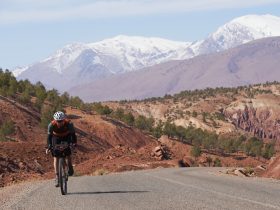The Sequoia & Kings Canyon is America’s second largest national park. It is located in Central California and spreads into Nevada. The park was created in 1890 by President William Harrison. It was the first national park created to protect a living organism; that organism is the sequoiadendron giganteum, commonly known as the redwood tree.
The National Park Service, the service that guides and protects all official National Parks in the US, was created to administer the parks in 1916. In 1940, President Roosevelt, with the aid of Congress, Kings Canyon was formed into Kings Canyon National Park.
Kings Canyon is a glacial valley. It has meadows, waterfalls, a river, vibrant meadows and tall cliffs. The tallest tree in Sequoia & Kings Canyon is The General Giant Tree. It’s 267.4 ft tall. After World War II, the parks were controlled by a single entity and it became known as Sequoia & Kings Canyon.
Over the years, the park has grown to 1,353 square miles. The park provides habitat for a wide diversity of animals, due to the diversity of the area. The park is composed of low elevation foothills, mixed forests of pine, incense cedar, fir and giant trees and Subalpine and Alpine Areas. Mountains shape the canyon as well as Lakes.
Over 3,000 lakes and ponds are in the park; it serves as home to fish, micro-crustaceans, and zooplankton. Most of these lakes are in the section of the park known as the wilderness. The wilderness is a section of the park that isn’t touched by man. Under law it is free from the manipulation of humankind. Officially, it is defined as “…an area of undeveloped Federal land…”
For lodging, the park offers group camping sites. These sites can hold up to 50 people. It has extra parking, picnic tables and other amenities. The camping sites also have coolers to protect your food from wildlife such as bears. They also offer alternatives to staying outdoors such as Cabins and nearby hotels. Camping tents and hammocks are available for rent or purchase.
The park has many activities, both yearlong and seasonal. It offers rock climbing, hiking, horseback riding and picnicking. During the winter, some of the park is regulated to snowboarding, skiing and snowshoeing.
Altogether, there are hundreds of miles of hiking trails. The trails vary in difficulty; some overlook the wilderness, while others allow you to experience the wildlife. Trails are split by terrain. There are Grant Grove Day Hikes, through the Giant Grove Village; the Cedar Grove Hikes that overlooks rivers and roaring waterfalls as well as steep and strenuous hills; and the Foothills Day Hikes, the weather here gets very hot.
While hikers have to watch out for snakes and poison oak. Lastly, there are overnight wilderness trips. These trips allow you to venture into the unmanned areas of the park. There, you can experience nature in its purest form. This is a wonderful opportunity to spend 24 hours away from civilization.
This is a historic and beautiful park you’re not going to want to miss!







